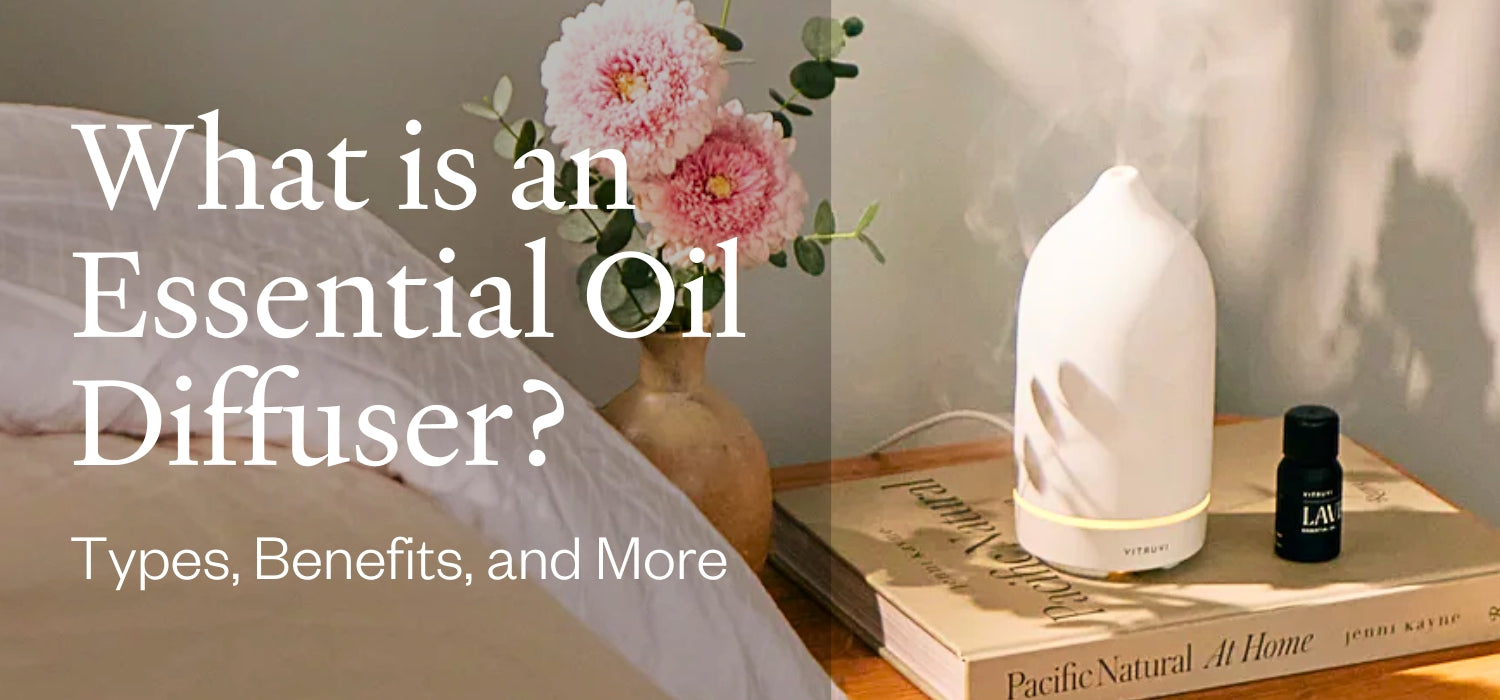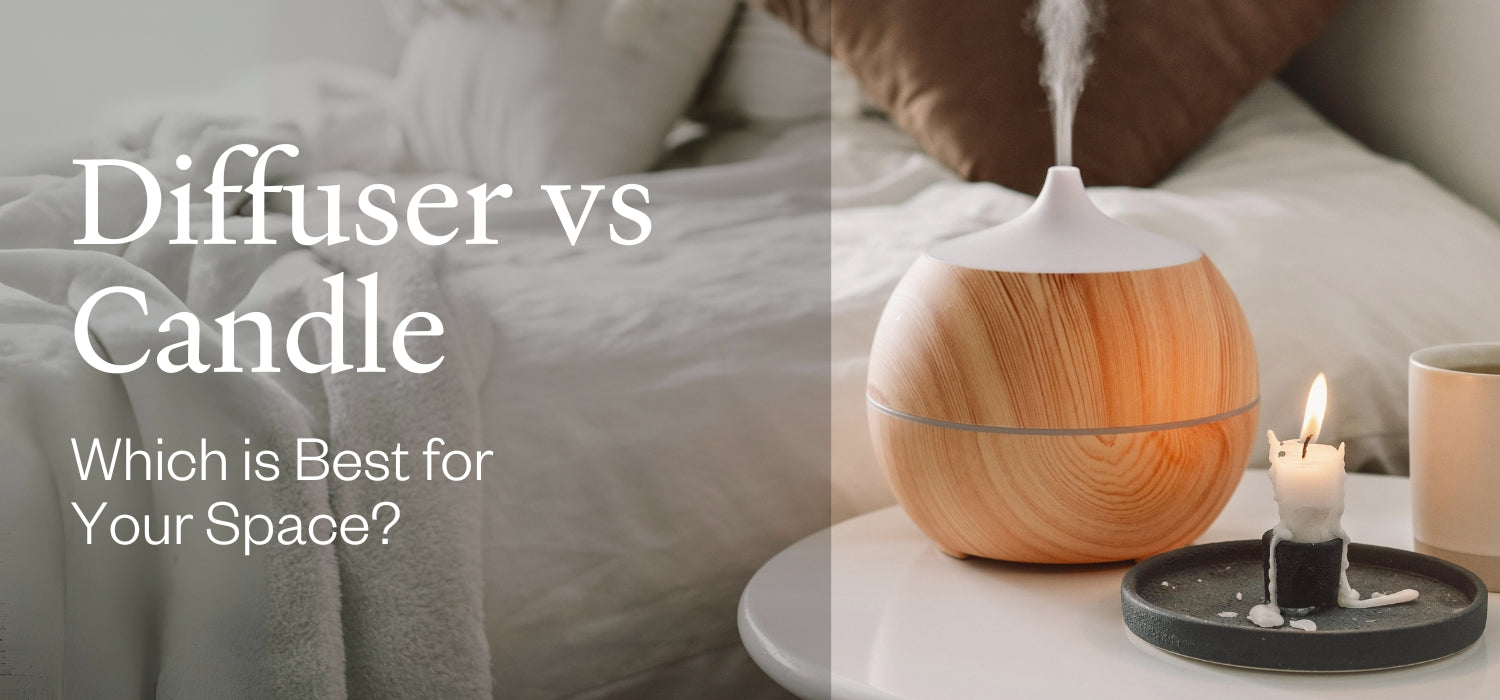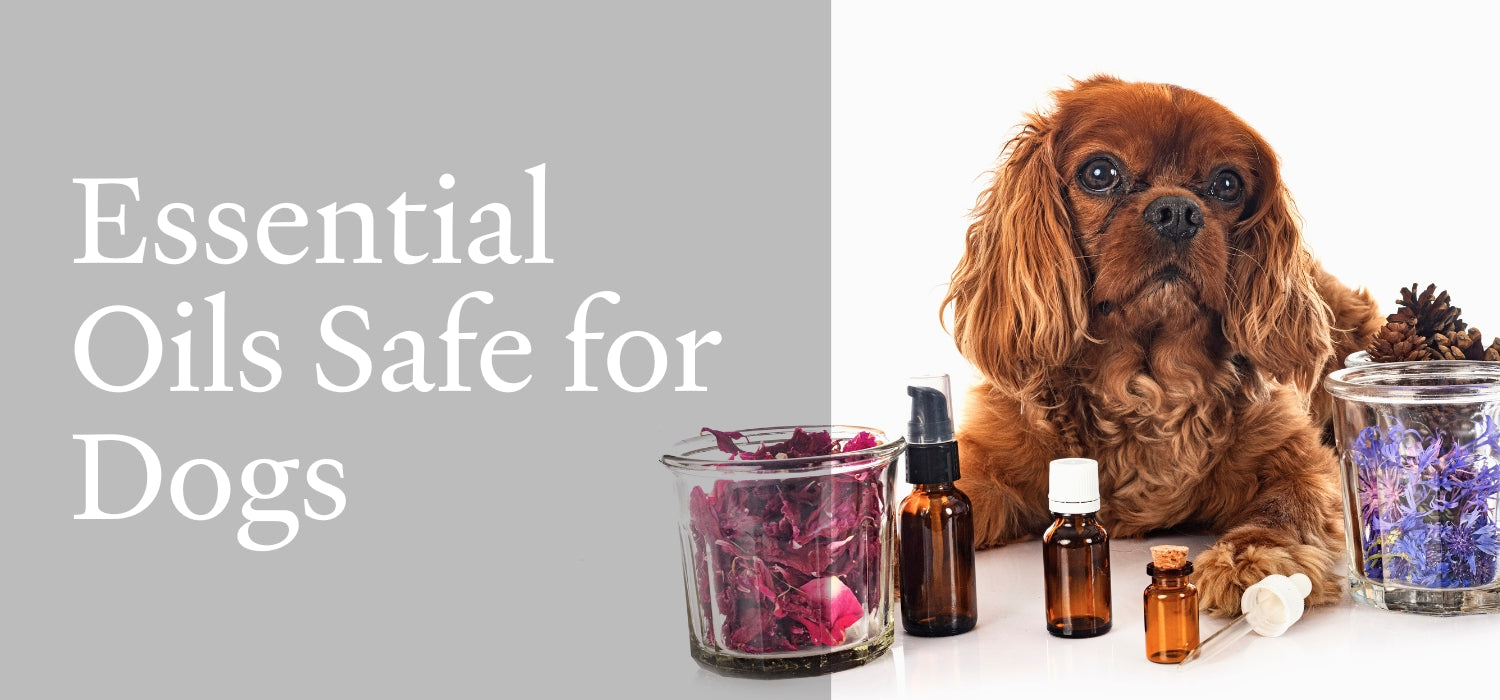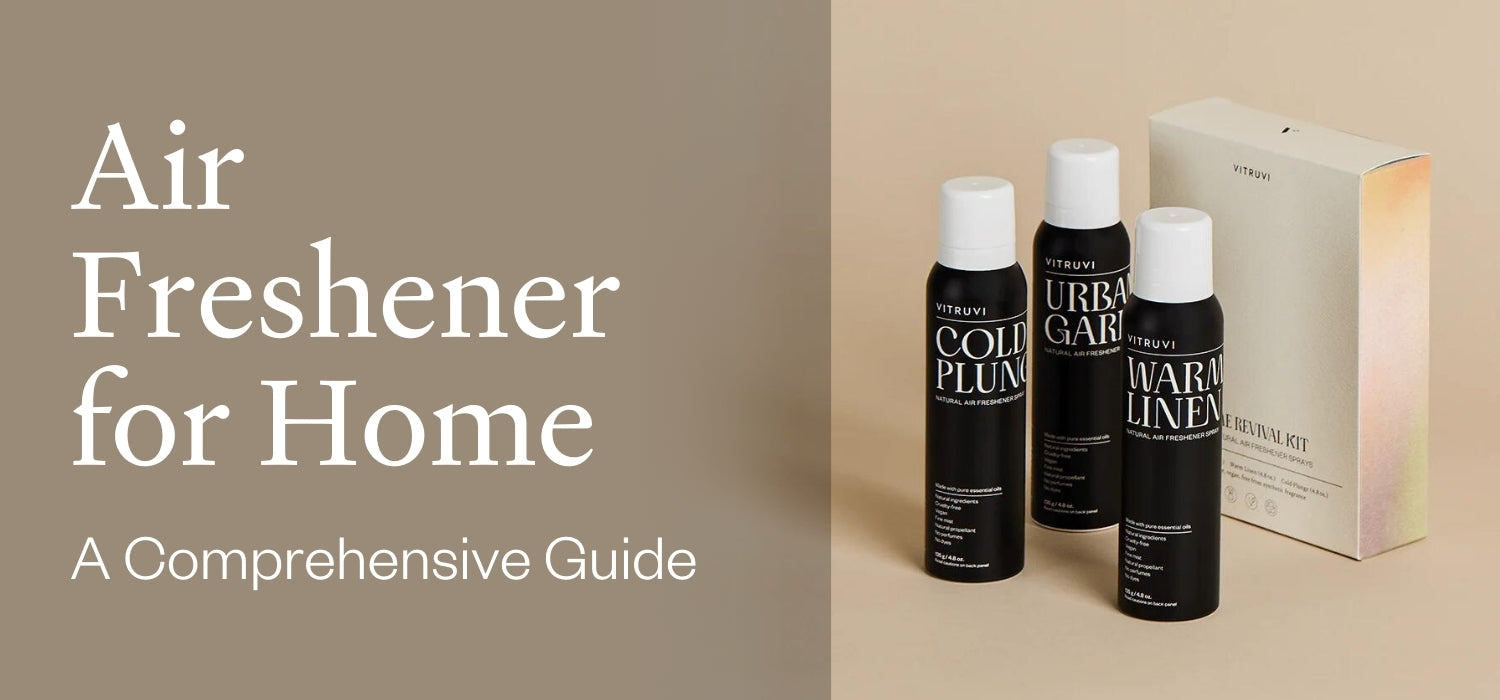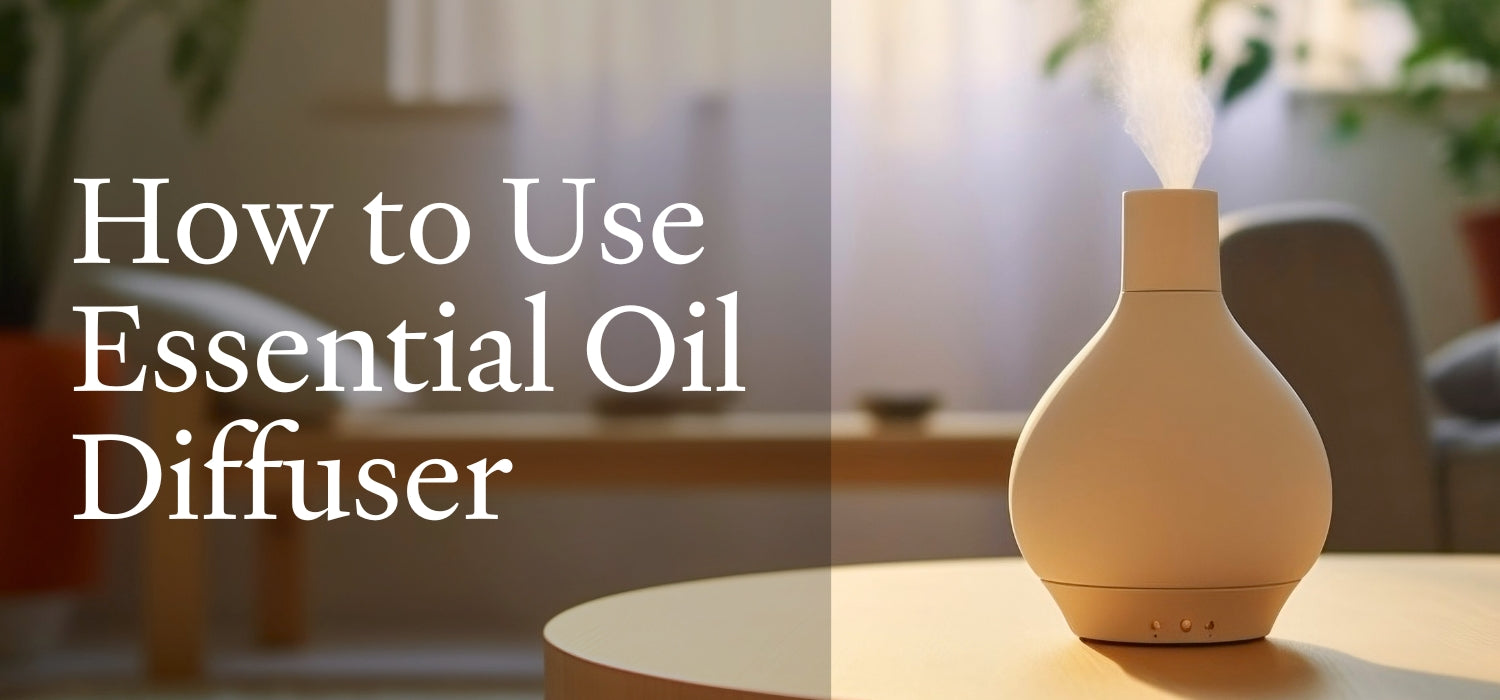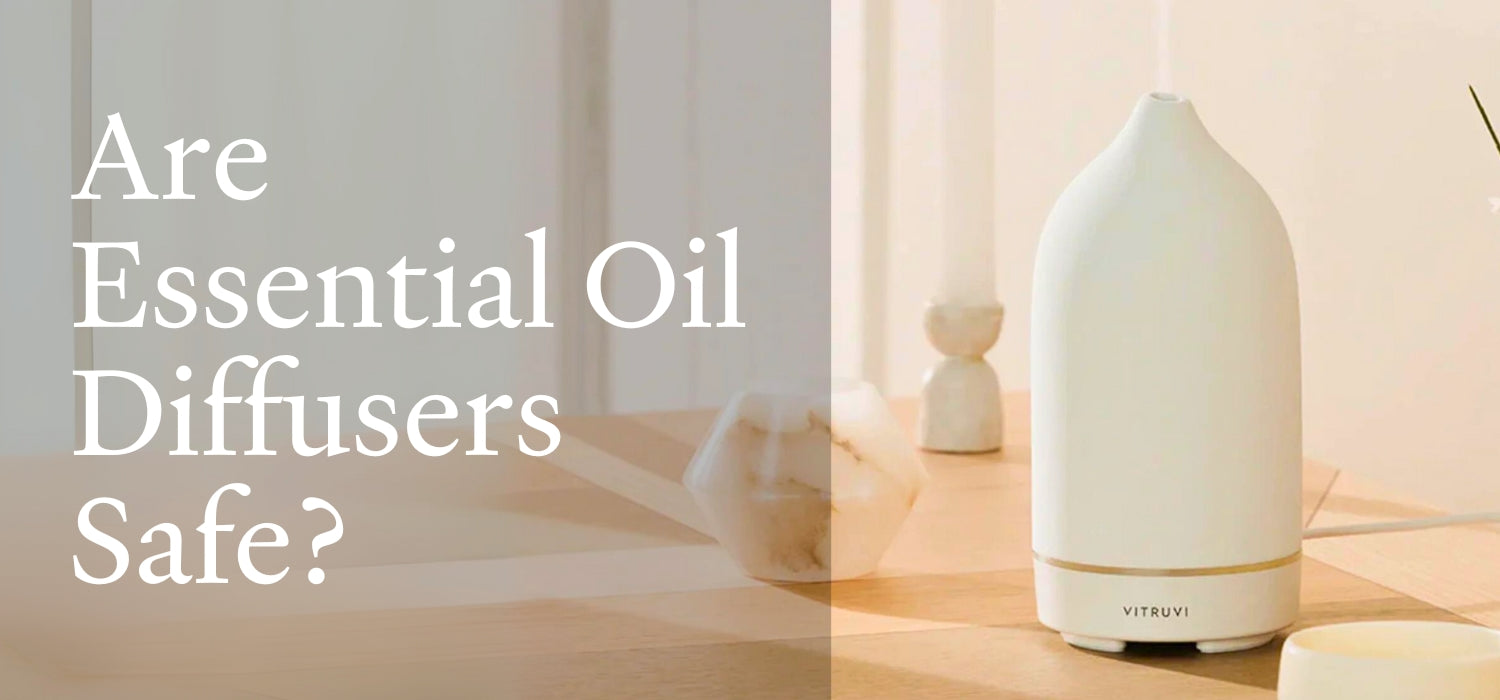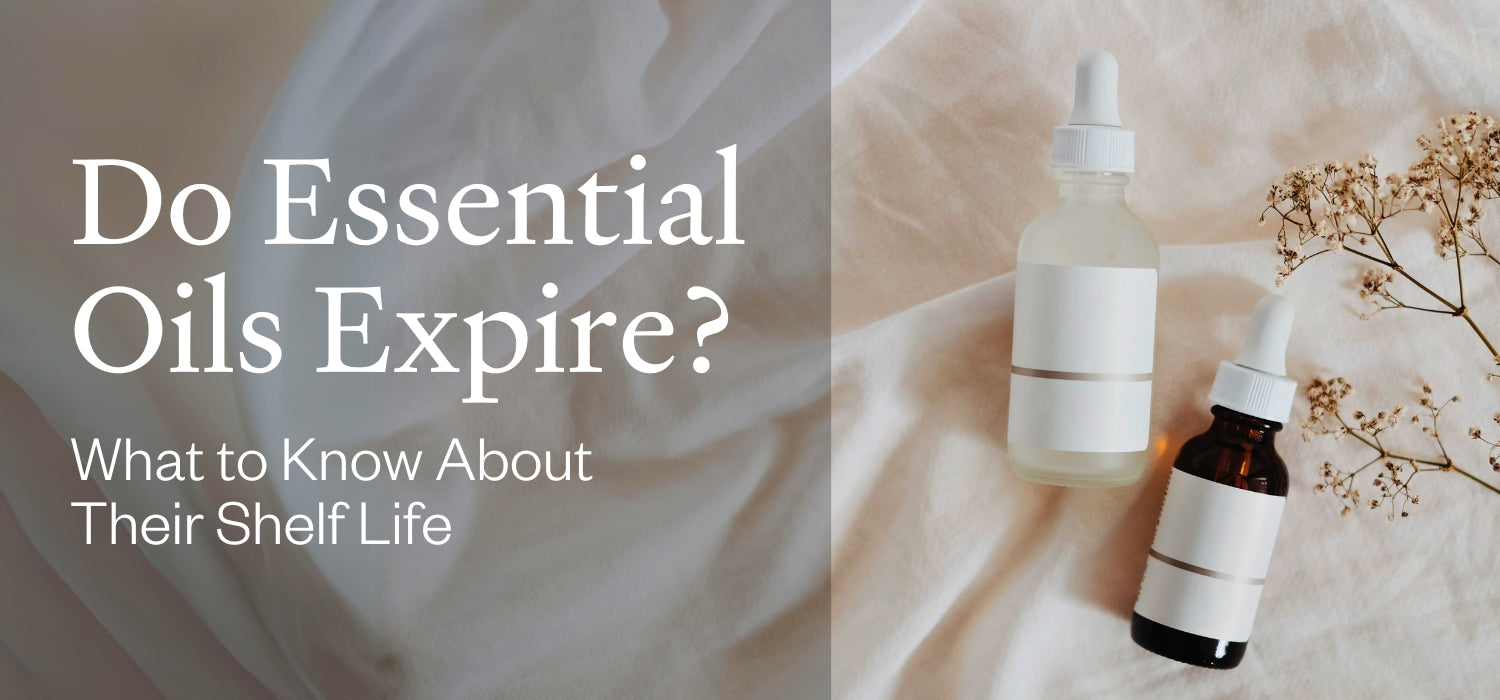Essential oil diffusers are used in aromatherapy to disperse essential oils into the air, creating a fragrant and therapeutic atmosphere.
They are famous for their ability to help with relaxation, stress relief, and improving air quality. They enhance the ambiance of a space with pleasant scents while promoting well-being by allowing the inhalation of beneficial compounds.
Below, we will discuss more essential oil diffusers, from the different types to safety tips for using them.
Types of Essential Oil Diffusers
There are various types of essential oil diffusers, each offering unique methods to disperse oils into the air. Each type caters to different preferences and needs in aromatherapy, allowing users to customize their experience for optimal relaxation and wellness.
Nebulizing Diffuser
A nebulizing diffuser is an essential oil diffuser that uses fluid dynamics principles to disperse pure essential oils into the air.
Unlike other diffusers that need water or heat to produce a mist, nebulizing diffusers work by drawing the oil into a fine mist through a process called atomization.
This is done using an air pump that creates a stream of air that passes through a small tube and pulls the essential oil upwards. As the oil rises, it is broken into tiny particles and released as a concentrated mist directly into the air.
Nebulizing diffusers do not dilute the oils with water, meaning they deliver a more potent and immediate aroma. This makes them ideal for those seeking a strong therapeutic effect.
They are particularly effective for large spaces, providing a robust and pure aromatic experience while avoiding heat and preserving the integrity of the essential oils.
Ultrasonic Diffuser

An ultrasonic diffuser is a popular type of essential oil diffuser that uses ultrasonic vibrations to disperse essential oils into the air.
These diffusers require water as a medium for diffusing the oils.
This device contains a small, vibrating disc that rapidly oscillates at ultrasonic speeds, creating ultrasonic waves. These waves cause the water and essential oil mixture to break apart into tiny particles, forming a fine, cool mist that is then released into the air.
This method not only distributes the fragrance of essential oils but also adds moisture to the air, acting as a humidifier.
Ultrasonic diffusers are favored for their quiet operation, energy efficiency, and gentle diffusion, making them ideal for use in bedrooms or relaxation spaces.
The mist produced is generally lighter and more subtle, offering a balanced and soothing aromatic experience while preserving the oils' therapeutic properties.
Evaporative Diffuser
An evaporative diffuser is a type of essential oil diffuser that disperses oils into the air through the natural process of evaporation. These diffusers use a fan or simply rely on airflow to help the essential oils evaporate and spread their aroma throughout the room.
The diffuser typically contains an absorbent material (such as a filter, wick, or pad), onto which a few drops of essential oil are added. As the oil is absorbed, it gradually evaporates, and the fan or natural air currents circulate the fragrance.
Evaporative diffusers are simple to use, often portable, and do not require water or heat, making them convenient for on-the-go use or in areas without electricity.
Because the oil evaporates at different rates depending on its volatility, the scent's profile may change over time — often starting with lighter, more volatile top notes before heavier base notes. This makes them ideal for quick, subtle, aromatic experiences.
Heat Diffuser
A heat diffuser is a type of essential oil diffuser that uses heat to evaporate essential oils, dispersing their aroma into the air.
These diffusers typically involve a simple setup where a small amount of essential oil is placed on a tray or a pad above a heat source.
The heat (usually from electricity, candles, or a light bulb) warms the oil, causing it to evaporate and release its fragrance.
Heat diffusers are famous for their simplicity, affordability, and silent operation. However, the use of heat can alter the chemical composition of essential oils, potentially reducing their therapeutic benefits.
The intensity of the aroma also depends on the level of heat applied — higher heat can produce a more potent scent but may cause the oil to dissipate more quickly.
Despite these limitations, heat diffusers are favored for creating a warm, inviting atmosphere, especially in smaller spaces where a gentle, continuous fragrance is desired.
How to Use an Essential Oil Diffuser
Knowing how to use a diffuser properly is important to ensure optimal performance and safety. Follow these steps below to get the most out of your diffuser.
- Select the Right Location: Place the diffuser on a flat, stable surface to ensure even mist distribution and prevent it from tipping over. Choose a well-ventilated area, but keep it away from direct heat sources and electronic devices to prevent damage or overheating. Avoid placing it near walls or furniture as well to prevent moisture buildup, which can lead to mold or damage.
- Prepare the Diffuser: Remove the top cover to access the water tank. Fill the water tank with clean, room-temperature water up to the recommended fill line. Avoid overfilling to prevent malfunction.
- Add Essential Oils: Add 5-10 drops of your chosen essential oil to the water.
- Activate the Diffuser: Place the top cover back on the diffuser. Turn it on and choose your preferred settings. Most diffusers offer multiple settings, such as continuous or intermittent mist, and optional light features.
Essential Oil Diffuser Maintenance
Proper cleaning and maintenance of your essential oil diffuser are critical for ensuring its optimal performance and longevity. Below are some tips for maintaining and cleaning your essential oil diffuser.
- Regular Cleaning: After each use, empty the water tank and wipe it with a soft cloth to remove any remaining water or oil residue. This prevents buildup and bacterial growth.
- Deep Cleaning Weekly: Fill the tank halfway with water and add a few drops of white vinegar. Run the diffuser for 5-10 minutes to allow the mixture to clean the interior. Afterward, empty the tank and wipe it dry.
- Clean the Ultrasonic Plate (if applicable): The ultrasonic plate, found at the base of some diffusers, can accumulate residue. Use a cotton swab dipped in vinegar to gently clean it.
- Avoid Harsh Chemicals: Only use gentle cleaning agents like vinegar. Harsh chemicals can damage the diffuser’s components and affect its performance.
- Store Properly: Store the diffuser in a cool, dry place when not in use. Ensure it is completely dry before storage to prevent mold or mildew.
- Check for Damage: Regularly inspect the diffuser for any signs of wear or damage and replace or repair it as needed.
Benefits of Using Essential Oil Diffusers

Regardless of the type of essential oil diffuser you want or have, they all offer similar benefits.
- Improves Air Quality: Essential oil diffusers help purify the air by dispersing natural oils with antimicrobial properties to reduce airborne pathogens.
- Enhances Mood: Diffusing certain essential oils, like citrus or peppermint, can boost mood and energy levels. Meanwhile, aromas like lavender and chamomile are known for their calming effects, helping to alleviate stress and anxiety.
- Promotes Relaxation and Sleep: Oils like lavender and eucalyptus promote relaxation, making diffusers excellent tools for creating a calming environment to aid in better sleep.
- Provides Natural Fragrance: Essential oil diffusers offer a natural way to spruce up your home, avoiding the synthetic chemicals in many commercial air fresheners.
- Supports Respiratory Health: Oils like eucalyptus and tea tree can help ease respiratory issues by clearing nasal passages and reducing inflammation.
- Repels Insects: Certain essential oils, such as citronella or lemongrass, act as natural insect repellents.
- Enhances Focus and Concentration: Diffusing oils like rosemary or peppermint can improve mental clarity and concentration, making it easier to focus on tasks. Some scents even improve creativity.
Choosing the Right Essential Oil Diffuser
There are different types of diffusers, each offering unique benefits. Consider the factors below to choose the right one, given your needs and preferences.
- Health and Wellness Goals: For therapeutic benefits, like relaxation or respiratory support, choose a diffuser that preserves the integrity of essential oils, such as an ultrasonic or nebulizing diffuser. Meanwhile, an ultrasonic diffuser with a large water tank would be better for improving air quality and adding moisture. For simple fragrance enhancement, an evaporative or heat diffuser may be enough.
- Room Size Consideration: Nebulizing diffusers are best for large spaces because they can cover a larger area with concentrated mist. For smaller rooms, an ultrasonic or evaporative diffuser offers a more subtle scent distribution.
- Type of Essential Oils: If you use thicker oils like sandalwood or patchouli, ensure the diffuser can handle them without clogging. Ultrasonic and nebulizing diffusers are typically more versatile with various oil viscosities.
- Preferred Method of Diffusion: If you prefer a strong, undiluted aroma, choose a nebulizing diffuser. For a gentle mist and added humidity, an ultrasonic diffuser is best. A heat diffuser may be enough for a warm, subtle fragrance, though it might alter the oil’s properties.
- Operating Time and Features: Consider how long you want the diffuser to run. Ultrasonic diffusers with large water tanks can run for several hours, making them ideal for overnight use. Look for features like timers and auto shut-off for convenience and safety.
- Portability and Design: Consider a portable or battery-operated model if you need a diffuser for multiple locations. Many diffusers also serve as decorative pieces, so you can choose a design that complements your home decor.
- Noise Level: Some diffusers are noisier than others. If you need a diffuser for a quiet environment (like a bedroom or office), opt for an ultrasonic diffuser, as this tends to operate silently, keeping you undisturbed.
Safety Tips and Precautions
It is important to know how to handle diffusers safely. Below are some precautions you should take when using them.
- Proper Ventilation: Always use diffusers in well-ventilated areas to prevent the buildup of essential oils in the air, as these can lead to respiratory irritation or headaches, especially in sensitive individuals. This is also very important if you plan to sleep with the diffuser intermittently running.
- Avoid Overuse: Limit diffuser use to avoid overwhelming your senses or causing adverse reactions. Running a diffuser for 30-60 minutes at a time is generally enough. Continuous operation can lead to excessive inhalation of essential oils, potentially causing nausea or dizziness.
- Oil Dilution: Some essential oils can be potent and may cause irritation if used undiluted. As such, always follow the manufacturer’s recommendations for oil-to-water ratios to ensure safe diffusion.
- Keep Away from Children and Pets: Some essential oils are harmful to children and pets. Always research the safety of specific oils before use, and keep diffusers out of reach to prevent accidental ingestion or exposure.
- Fire Hazard Awareness: To avoid fire risks, never leave a heat diffuser unattended. Place it on a stable surface away from flammable materials.
- Monitor for Allergic Reactions: Be aware of allergic reactions, such as skin irritation or respiratory issues, especially when using a new essential oil. Discontinue use if any adverse effects occur.
- Clean Regularly: Regular cleaning of your diffuser is vital to prevent mold, bacteria, and residue buildup, which can affect air quality and device longevity.
Frequently Asked Questions (FAQs)
We have answered a few more questions regarding essential oil diffusers.
Is a Diffuser the Same as a Humidifier?
No, a diffuser is not the same as a humidifier. A diffuser disperses essential oils into the air for aromatherapy, while a humidifier increases moisture levels in the air to alleviate dryness. However, some ultrasonic diffusers can also function as humidifiers.
Can I Just Use Water in My Diffuser?
Yes, you can use just water in your diffuser (especially if it is an ultrasonic model) to add moisture to the air like a humidifier.
Is It Okay to Put Cold Water in a Diffuser?
Yes, putting cold water in a diffuser is okay since it prevents overheating and ensures the longevity of the diffuser’s internal components. However, it may also produce less mist since it might inhibit ultrasonic vibrations.
Key Takeaways on What is an Essential Oil Diffuser?
A diffuser is a versatile and valuable tool in aromatherapy, offering numerous benefits such as improved air quality, enhanced mood, and natural fragrance without synthetic chemicals.
When you get the right diffuser and use it safely and effectively, you can create a therapeutic environment in your home or workspace.
With different types available, you can choose the one that best suits your needs and preferences.
Whether you seek relaxation, mental clarity, or simply a pleasant atmosphere, a diffuser is sure to be a big part of your wellness routine.

